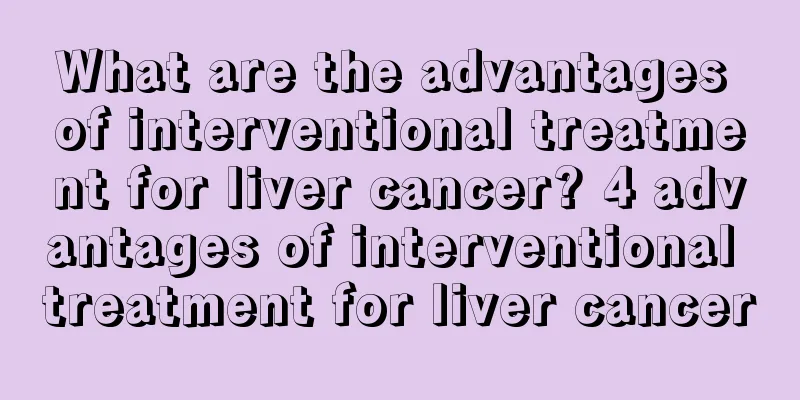What are the advantages of interventional treatment for liver cancer? 4 advantages of interventional treatment for liver cancer

|
Treatments for liver cancer include surgical and non-surgical treatments. Surgery is mainly for early-stage liver cancer, which used to refer to tumors smaller than 5 centimeters, but now usually refers to patients with tumors smaller than 3 centimeters. For these patients, surgical treatment is very effective. For patients who cannot undergo surgical resection, that is, patients with advanced tumors, or patients with early-stage tumors but with medical diseases, such as heart disease or hypertension, and patients with severe liver cirrhosis, who cannot withstand surgery, other non-surgical treatment methods can be used. Among non-surgical treatment methods, interventional treatments are currently more mature. Interventional therapy has very important advantages compared with systemic chemotherapy: One is local drug administration for interventional treatment. As mentioned earlier, the femoral artery is inserted into the hepatic artery, and then chemotherapy drugs or embolic agents are injected into the hepatic artery. In this way, the drug concentration in the local tumor is very high, which is equivalent to directly putting the drug into the blood supply artery of the tumor. If the drug is administered peripherally, that is, systemic chemotherapy, the drug passes through the systemic circulation and then reaches the liver. Obviously, the former makes the local tumor drug concentration very high. Second, interventional therapy can be used for embolization. Hepatocellular carcinoma has a rich blood supply, and embolization therapy can thrombose the tumor's blood supply artery. After thrombosis, the tumor lacks blood supply and nutrition. Without nutrition, the tumor will undergo necrosis. Third, because we inject the drug into the blood supply artery of the tumor, the systemic toxic side effects of the patient are significantly reduced, and are not as severe as the toxic side effects of systemic chemotherapy. Fourth, patients recover quickly and the procedure can be repeated, which is an obvious advantage of interventional therapy. |
>>: How to prevent liver cancer? Experts on liver cancer prevention give 4 suggestions
Recommend
Why is the area itchy due to moxibustion?
People may experience various reactions when doin...
Hazards of microwave ablation
Microwave ablation is a type of ablation. There a...
What to do if the hair follicles under the armpits become inflamed?
Folliculitis is a common clinical disease with ob...
Is magnet harmful to human body
Magnet is also called magnet in science, and magn...
How to prevent bladder cancer?
Bladder cancer is more common in middle-aged and ...
The harm of hair dyeing for middle-aged and elderly people
As middle-aged people age, their hair often turns...
What's wrong with trace urine protein? 7 things you need to pay attention to
Everyone's urine contains trace amounts of ur...
Is aspirin plus honey effective in removing freckles?
I wonder if you have ever heard of aspirin plus h...
10 details of the feet suggest female diseases
Do you want to know someone's health status w...
Precursors of breast cancer brain metastasis
Premonitions of breast cancer brain metastasis: B...
Can pregnant women drink seaweed soup?
Can pregnant women drink seaweed soup? We need to...
Frequent stomachaches hint at this matter
Sometimes we may think that unintentional abdomin...
What does a routine blood test check?
Many people come to the hospital, and the doctor ...
Analysis of the causes of spots on the left cheek
Under normal circumstances, human skin is smooth ...
Is it necessary to remove the uterus for ovarian cancer?
Whether ovarian cancer requires a hysterectomy sh...









